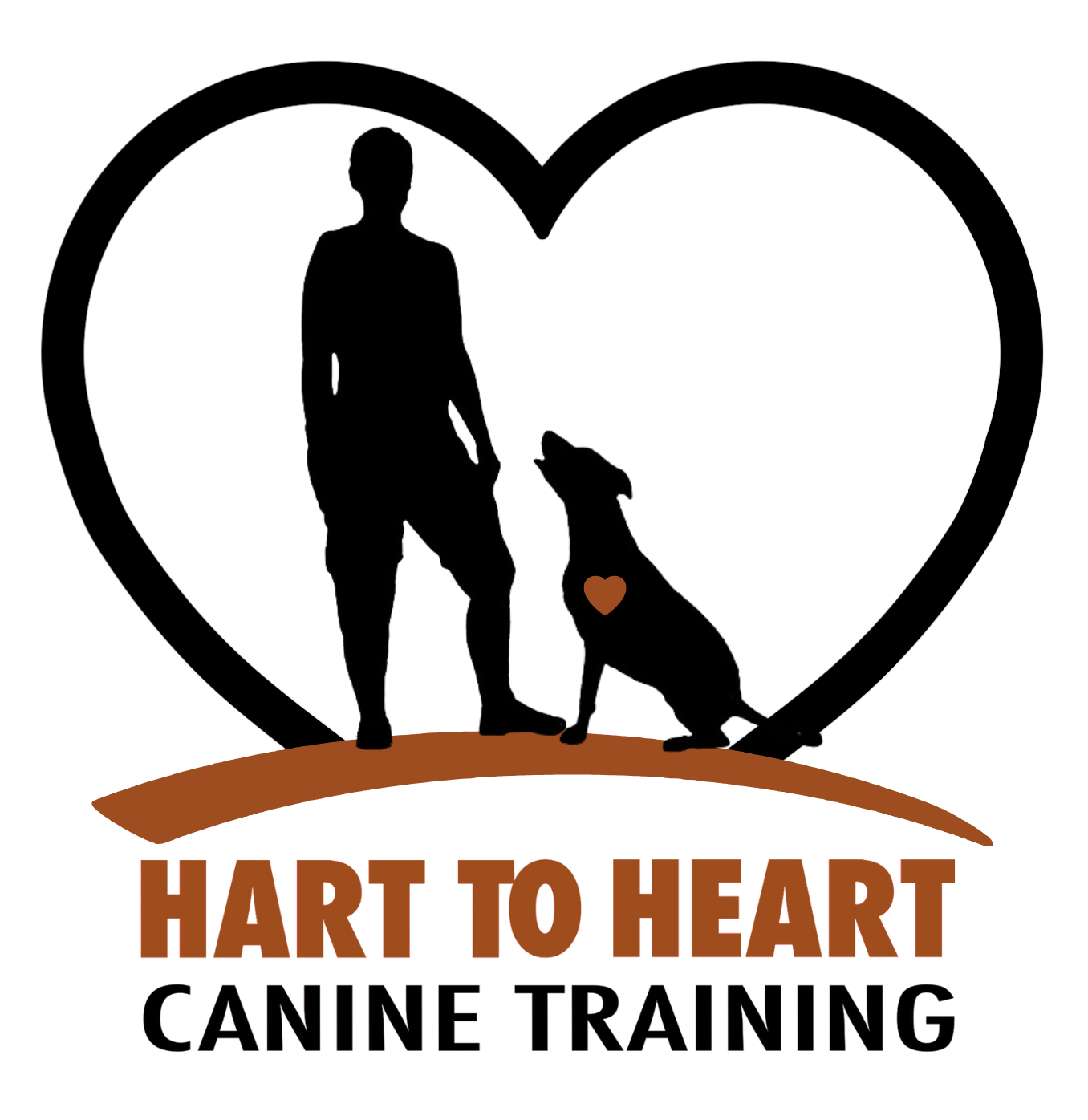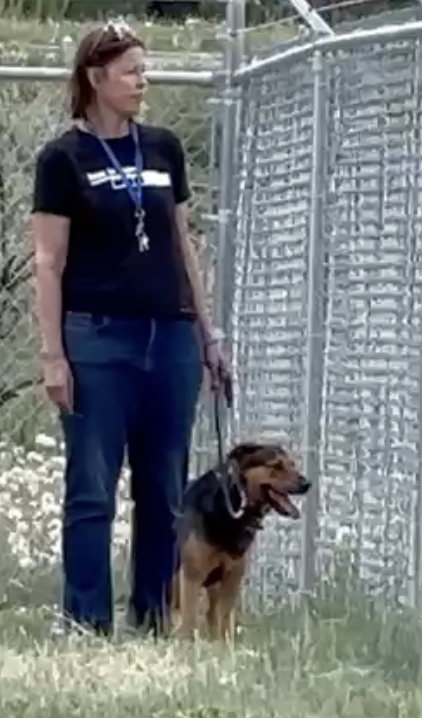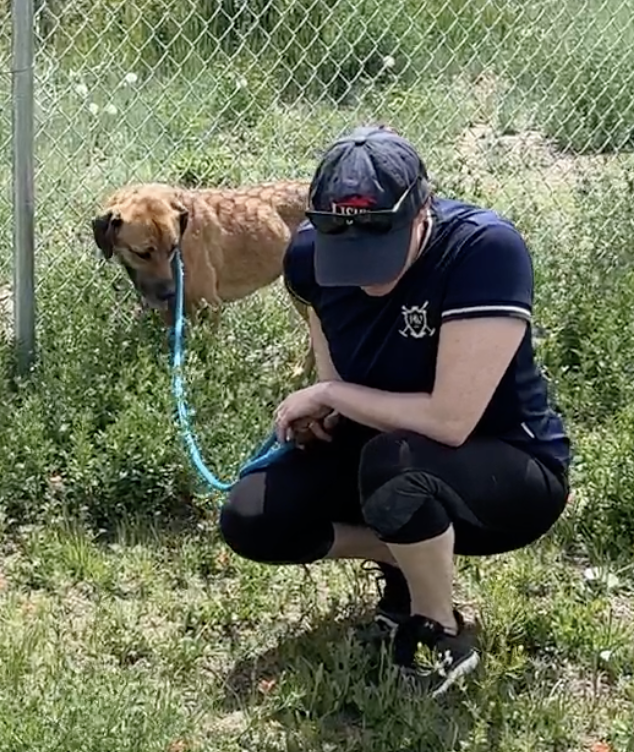Six Common Mistakes Made With Fearful & Feral Dogs that Inhibit Healing
I am raising the standards for fearful and feral dog rehabilitation. Many fearful dog training rehab methods can be counter-productive or too slow for the dog’s growth and mental health. Fearful and feral dogs are failing to reach their true potential as quickly as possible because the training methods commonly used are failing the dogs. The fearful and feral dogs I rehabilitate often make significant progress within a few weeks and go on to lead very fulfilling lives.
Dogs deserve to feel safer and braver as soon as possible, and in turn, increase their welfare. It doesn’t have to take months for a dog to enjoy an enriched life; huge improvements can happen in days. Dogs in my program start living by being taught to walk on a leash first. I approach fearful and feral dog rehab by becoming a trusted partner to the dog. I engage in activities the dog finds meaningful, making myself relevant and essential to their role as a social pack animal. Then the dog will follow my lead to join me in challenges that facilitate growth. By sharing common mistakes—mistakes that unintentionally hinder recovery—I hope to improve the lives of fearful and feral dogs. These tips are best applied at the start of the rehabilitation process. Once the dog trusts you and gains more skills, you can interact with them like a normal human over time.
Common Mistakes in Fearful and Feral Dog Rehabilitation:
1. Approaching the Dog in a “Scary” Way
Many well-meaning people look directly at a fearful dog, bend toward it, with outstretched hands, and believe this will encourage the dog to approach them. It does the opposite. Dogs and humans have different polite and non-threatening body language. Looking at and reaching for a dog signals you are a threat to the dog. This causes miscommunication. To reassure a fearful or feral dog that you mean no harm:
Fearful dog feeling safe to approach a person that is facing away from him.
- DO NOT make eye contact. If there is one very simple thing that can completely change your interaction with fearful and feral dogs, it is this. Look to the side of the dog or use your peripheral vision if you need to see anywhere near the dog’s eyes, such as when clipping on a leash.
- Approach the dog from the side or backwards at a normal pace. Don’t act strange or move too slow. Be natural, but avoid facing the dog when approaching.
- Don’t reach over the dog’s head or body. Be mindful of how your movements affect the dog. To clip a leash on squat down and go underneath the dog’s head.
2. Not Using a Leash
The first step in guiding a fearful or feral dog toward braver behavior is leash training. Many people fear the resistance a fearful or feral dog may show when learning to walk on a leash. Using simple tension-release techniques, the dog quickly learns I communicate clearly and a leash means more freedom. A leash is the path to a higher level of welfare. Often, people bring a fearful or feral dog home and immediately remove the leash. Then, the dog may hide or run from people, developing fearful habits, usually while the owner is trying to “capture” or “trick” the dog into putting on a leash. This sets up a whole series of trust-breaking behaviors on the human’s part. Every single dog I have rehabilitated has learned to walk on a leash during the first session and has worn a leash from the start of rehab until the dog follows me willingly (1-3 weeks). Leash use speeds up rehab because I can guide the dog to engaging in fun and healing activities with me. Of course, safety is very important with fearful and feral dogs, so always use a properly fitting martingale collar, slip lead, and back it up. See this video, “ Best Way to Backup a Collar and Leash” for instructions (no harnesses as they are not secure). By keeping a leash on the dog until it’s no longer needed, and using the leash to guide the dog to explore and move with you, the dog will develop braver, desired behaviors.
Feral dog walking on loose leash during her 3rd session with me.
3. Not exercising the dog
So much evidence points towards exercise as a stress, depression, and anxiety reducer, it is a wonder why so many people allow their fearful or fearful dogs to remain shut down and scared. Life without enrichment and exercise is way more damaging than any stress caused by a proper leash training and exercise regimen. For my Feral Dog Immersion Program, I trained the dogs to walk on leash; they lived in an enriched environment with five people, hiking in nature daily, for five days. The progress these dogs made in five days was astounding. You don’t have to do extreme hiking with your dog, but exercise in a relatively quiet area is key to healing. It creates a bond and builds trust while activating all kinds of feel-good hormones in the dog’s body. This is a natural way to improve the dog’s mood without the use of questionable medications.
4. Avoiding stress for the dog
It has been shown that stress is essential for living creatures to become resilient and to make any kind of progress. However, the common thought that dogs will crumble under any kind of challenge or stress decreases dogs’ welfare. Dogs are designed to seek pleasure (doing dog things, not just food), to overcome challenges, and to be curious. When presenting a challenge, the dog can succeed in doing and involves a dog’s natural behaviors, the dog is intrinsically rewarded. The problem I see is that a lack of challenge is presented to fearful and feral dogs so the dogs form fearful habits. This is usually done because the dog shows a small resistance or stress, and the human gives up on them. The balance of enough stress to promote change while not being overwhelming to the dog is key. This isn’t about flooding or making the dog do something. It is supporting the dog to tap into curiosity and the dog’s natural instincts. A dog is capable of much more than most training methods account for, as long as the person guiding the dog is a trusted partner.
5. Not doing naturally rewarding behaviors with the dog
Dogs love doing dog things, but if a dog is scared of the human and doesn’t know how to walk on a leash, the dog can’t do those things in most rehab situations. They love to explore, walk, sniff, dig, climb, watch, observe, hunt things, and most of all, belong to a pro-social group of people/dogs. By doing natural behaviors WITH your fearful or feral dog, you become understandable. If you start speaking their language, you become more relevant to dogs. If you just give the dog a snufflemat or let it sniff at the end of a leash, you are removed from the activity. If you point out things in a snufflemat, or better yet, things of interest on a walk, to your dog, you become part of the dog’s interest and they will engage with you better at other times. Because this type of engagement is overwhelmingly lacking in dog training, I developed my Nose-Centric Dog Training and Rehabilitation system. The basis of Nose-Centric is to help a dog heal by doing natural behaviors with the dog, especially sniffing. I have connected and started building trust with completely feral dogs by sniffing something they like to sniff (usually a pee spot or other stinky thing) many times over. I have also climbed on rocks or benches with dogs, dug in the dirt, showed interest in passing cars or birds, hunted lizards, and watched the world go by with dogs. The dogs noticeably perk up and seem to trust me more when I am engaging with them in a dog-like way. So have fun exploring with a fearful or feral dog and see the difference.
Feral dog sniffing with person he just met 5 minutes beforehand.
6. Not being trustworthy, according to the dog
Fearful and feral dogs, and many other “normal” dogs, don’t trust us just because we feed them and give them a nice house. We need to prove we are worthy of being followed and trusted. We need to acknowledge what the dog finds concerning by looking at it and sniffing the air (yep – sniff so your dog can hear it, but don’t look at the dog while sniffing). That way the dog knows we are aware of our surroundings, and therefore can protect them and a worthy pack member. If the dog thinks we are oblivious to the barking dog, delivery truck, or neighbor pressure-washing his shed, then the dog assumes he is alone to defend himself. But if we look at the “scary” things, sniff a little, and tell the dog, “It’s ok. Let’s go,” and move away from the scary thing, our dog thinks we are taking smart action. Then, the dog will happily follow us and feel protected. Many times, a fearful dog may trust their human not to hurt them, but the dog doesn’t think the human can protect them and keep them safe. The latter is how you earn deep trust with a fearful dog, or any dog.
While these suggestions only scratch the surface of the things involved in fearful and feral dog rehab, they will give you and your dog a huge boost in the right direction. For more info about my fearful and feral dog rehab programs and online learning, please visit Hart2heartcanine.com



